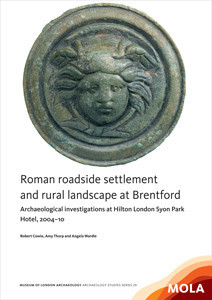
Format: Paperback
Pages: 110
ISBN: 9781907586194
Pub Date: 30 Sep 2013
Series: MoLAS Archaeology Studies Series
Description:
Excavations in Syon Park, Brentford, have made a substantial contribution to our knowledge of this Roman rural settlement on the London–Silchester road, by a ford across the Thames. The site yielded a well-dated sequence – from the mid 1st to early 5th century AD – including occupation deposits and two 2nd-century timber buildings destroyed by fire, as well as details of the main road and adjacent field system. These and a large assemblage of finds, including a surgical instrument and a roundel depicting the Medusa, provide a rare glimpse of life in the countryside in the hinterland of Londinium.
A detailed overview of Roman Brentford (the first to be published since 1978) is included.
Prehistoric Communities at Colne Fen, Earith
Format: Hardback
Pages: 288
ISBN: 9780954482497
Pub Date: 02 Sep 2013
Imprint: Cambridge Archaeological Unit
Description:
Charting a decade of intensive fieldwork along a 2km stretch of the Colne Fen, Earith fen-edge, the scope of these books is formidable and together they include the work of 65 contributing specialists (with a forward by Ian Hodder). The fieldwork involved innovative methodologies, and groundbreaking scientific and micro-sampling studies are presented within the volumes. Portions of text are, moreover, avowedly experimental (e.
g. intertextuality and antiquarian-informed perspectives) and it explores the long-term interplay of landscape process and (proto-) historicism. Appropriate to the practice of a comparative archaeology and the ‘challenge of numbers’, throughout emphasis is given to multiple-scale settlement and spatial/distributional analyses.Concerned with the landscape’s prehistory, Volume I, apart from relating the project’s palaeoenvironmental researches, outlines the excavation of two ring-ditch monuments (with accompanying cremation cemeteries), major Middle Bronze Age fieldsystems and their accompanying occupation clusters, and seven Iron Age settlements.

Format: Paperback
Pages: 244
ISBN: 9781902771908
Pub Date: 31 Aug 2013
Description:
Located on the south side of the River Tees, in north-east England, the Roman villa at Ingleby Barwick is one of the most northerly in the Roman Empire. Discovered originally through aerial photography and an extensive programme of evaluation, the site was excavated in 2003-04 in advance of housing development. Unusually for the region, the site demonstrated evidence for occupation from the later prehistoric period through to the Anglo-Saxon.
The excavations at Ingleby Barwick are significant not only for their scale but also for being carried out under modern recording conditions, allowing for extensive and detailed analysis of the finds. The villa is also a rare example of a Roman civilian site in the hinterland of Hadrian’s Wall.The Roman winged corridor villa and its outlying stone structures were surrounded by an extensive layout of rectilinear enclosures. While the main villa building was preserved in situ, excavation of the surrounding area revealed features such as ovens and paved surfaces, as well as rare finds such as a glass tableware vessel probably from Egypt and a large hoard of metalwork. The pottery has allowed a detailed phasing of the site to be proposed, while the environmental evidence reveals the villa to have been a working farm.

Format: Paperback
Pages: 90
ISBN: 9781907586187
Pub Date: 31 Aug 2013
Series: MoLAS Archaeology Studies Series
Description:
This thought-provoking volume presents the results of the archaeological investigation of a large site in Lundenwic. A fragmentary sequence nevertheless includes possible Early Saxon activity, 7th- and 8th-century settlement features including a cookshop, a workshop for non-ferrous metalworking and debris from a smithy, and the latest radiocarbon-dated inhumation in Lundenwic (cal AD 720–950). These excavations have made important contributions to our understanding of Lundenwic, which has been enhanced by the unprecedented level of organic preservation at the site.
The resulting survival of Saxon footwear, timber objects and uncharred botanical remains adds unusual detail to this publication.

Format: Paperback
Pages: 150
ISBN: 9781905905294
Pub Date: 31 Jul 2013
Series: Thames Valley Landscapes Monograph
Description:
This volume presents the results of two excavations on the gravel terraces of the Lower Kennet Valley, at Green Park (Reading Business Park) Phase 3 and Moores Farm, Burghfield, Berkshire.The Green Park excavations uncovered a field system and occupation features dating to the middle to late Bronze Age. Five waterholes or wells were distributed across the field system, the waterlogged fills of which preserved wooden revetment structures and valuable environmental evidence.
The pottery from the waterholes makes a significant contribution to our understanding of the middle to late Bronze Age transition in the region. Later activity included middle to late Iron Age boundaries, a late Iron Age cremation burial, a Romano-British field system and post-medieval trackways.The Moores Farm excavations revealed occupation from the Mesolithic, Neolithic, middle Bronze Age and early Iron Age. The middle Bronze Age settlement included pits, ovens and possible post structures, and was again situated within a contemporaneous field system dotted with waterholes.As well as discussing these two sites, the volume provides an overview of all of the work to date in the Green Park Farm/Reading Business Park area, exploring the development of this important prehistoric landscape.

Format: Paperback
Pages: 120
ISBN: 9781907586170
Pub Date: 30 Jun 2013
Series: MoLAS Archaeology Studies Series
Description:
Excavations on the south side of Cheapside found evidence for Roman timber buildings and pits dating to the later 1st and 2nd centuries AD, and a masonry building constructed after c AD 125. The main west–east road through Londinium lay immediately north of the site. Evidence for later Roman occupation was limited by modern truncation.
No medieval ground surfaces survive, but the site was reoccupied from the 10th century with at least one substantial building existing by the 13th century. Pit and well groups include late 13th- or early 14th-century vessels associated with the wine trade and early 14th-century kitchenware.

Format: Hardback
Pages: 352
ISBN: 9781842174883
Pub Date: 31 May 2013
Illustrations: b/w & colour illus
Description:
The Somerset Levels and Moors are part of a series of coastal floodplains that fringe both sides of the Severn Estuary. These areas have similar Holocene environmental histories and contain a wealth of waterlogged archaeological landscapes and discrete monuments. The importance of Somerset's prehistoric wetland heritage is shown by the fact that twenty-five percent of all the prehistoric waterlogged sites thought still to exist in England are from the Somerset moors, the County Museum in Taunton Castle holds the largest collection of conserved prehistoric worked wood in the UK, possibly in the whole of Europe, the Sweet Track (the oldest known wooden trackway in the UK) and Glastonbury Lake Village have produced the most complete record of Neolithic and Iron Age material culture in the UK and Glastonbury Lake Village was the best preserved prehistoric settlement ever discovered in the UK.
This substantial monograph presents the results of the MARISP project ( Monuments at Risk in Somerset Peatlands) which thoroughly assessed the condition of the wetland monuments and the ongoing threats to their survival and aimed to answer key research questions about the sites through the use of minimally invasive excavation and to inform the development of future national and county wetland strategies.
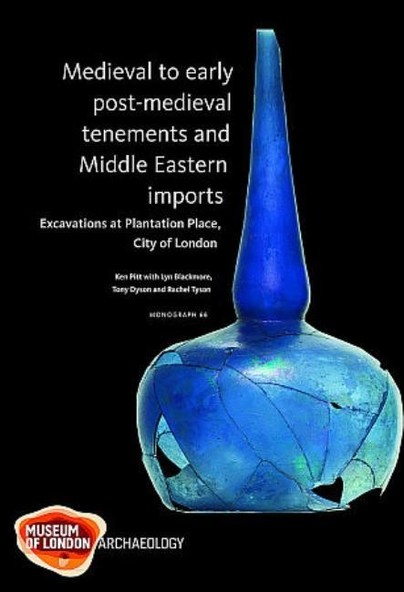
Format: Hardback
Pages: 140
ISBN: 9781907586163
Pub Date: 30 Apr 2013
Series: Monograph Series
Description:
Excavations at Plantation Place provided evidence for medieval and early post-medieval occupation of an entire block in the eastern part of the City of London near the Thames waterfront. Contemporary ground surfaces and buildings did not survive, but associated pits and wells have been related by documentary and cartographic research to identified tenements in this thriving area of shops, warehouses and merchants’ residences. Important assemblages from pits and wells include vessels used in refining gold, crucibles and moulds from bronze casting, and the largest assemblage of late medieval Islamic-style glass yet found in Britain, alongside Middle Eastern ceramics.

Format: Paperback
Pages: 256
ISBN: 9781905119387
Pub Date: 30 Apr 2013
Illustrations: col illus
Description:
This book discusses the 19th-century historic landscape of Devon though the creation, manipulation and querying of a Geographical Information Systems (GIS) database to examine physical evidence of change and development through field and settlement patterns. Making use of tithe surveys, the relationship between field and settlement morphologies and patterns of landholding is discussed for three case-study areas in Devon, developing the idea of landscape pays and the identification of regional differences in the study of the historic landscape.
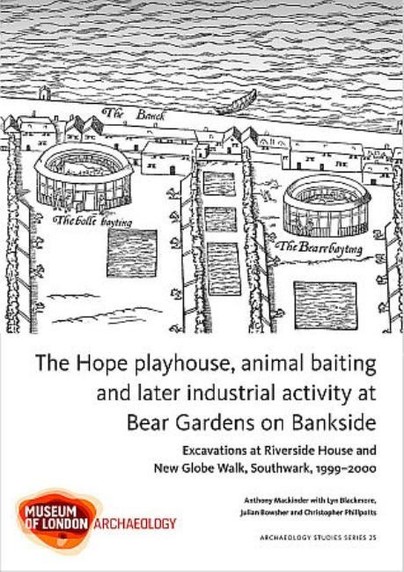
Format: Paperback
Pages: 94
ISBN: 9781907586200
Pub Date: 31 Mar 2013
Series: MoLAS Archaeology Studies Series
Description:
Southwark’s famous Bankside was long known as an entertainment area up to the 17th century. This volume provides evidence for the Barge, one of the medieval stewhouses (tavern/brothel) and the later Hope, a dual purpose building hosting animal baiting as well as play performances. The next phase in Bankside’s history was industrial and its glass and pottery products of the 17th and 18th centuries were much sought after.
Evidence for their production was found on the sites. The remains of 19th-century brick buildings relate to a known iron foundry in the area.
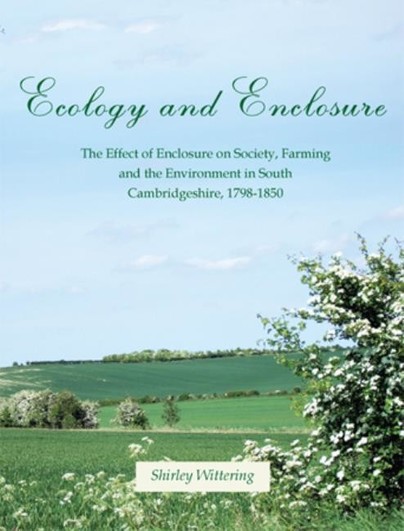
Format: Paperback
Pages: 192
ISBN: 9781905119448
Pub Date: 07 Feb 2013
Description:
South Cambridgeshire has some of the richest arable land in England and has been cultivated for millennia. By the turn of the nineteenth century industrialisation and massive population growth had resulted in an enormous increase in the demand for food, which in turn led to enclosure. But this desire to plough every available piece of land resulted in the destruction of many valuable and distinctive habitats that had existed for centuries.
The Ecology of Enclosure breaks new ground in comparing the effect of Parliamentary Enclosure with the findings of the enthusiastic 'Botanisers' from Cambridge; this reveals not only the effect of enclosure on the ecology of the land but also on the people whose link with the land was broken. The first section presents a study of social and agricultural life before enclosure, describing geology and climate; the fold-course open field system of farming and the strict stinting rules which governed how land could be used for grazing and stock movement; and the crop rotation systems employed. The second part describes the process of enclosure, including opposition to it; the changes that occurred to the landscape and within village communities as work in industry gradually replaced rural occupations; the effects of fencing on movement; and of the loss of common land to the plough. The third section is an analysis of the new study of Botany which the University of Cambridge was enjoying in the eighteenth and nineteenth centuries based on their own records and a review of some of the specific effects on the flora and fauna of the area.
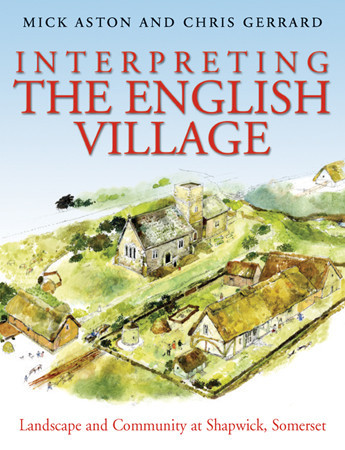
Format: Paperback
Pages: 416
ISBN: 9781905119455
Pub Date: 07 Feb 2013
Illustrations: 233 illus
Description:
An original and approachable account of how archaeology can tell the story of the English village. Shapwick lies in the middle of Somerset, next to the important monastic centre of Glastonbury: the abbey owned the manor for 800 years from the 8th to the 16th century and its abbots and officials had a great influence on the lives of the peasants who lived there. It is possible that abbot Dunstan, one of the great reformers of tenth century monasticism directed the planning of the village.
The Shapwick Project examined the development and history of an English parish and village over a ten thousand-year period. This was a truly multi-disciplinary project. Not only were a battery of archaeological and historical techniques explored - such as field walking, test-pitting, archaeological excavation, aerial reconnaissance, documentary research and cartographic analysis - but numerous other techniques such as building analysis, dendrochronological dating and soil analysis were undertaken on a large scale. The result is a fascinating study about how the community lived and prospered in Shapwick. In addition we learn how a group of enthusiastic and dedicated scholars unravelled this story. As such there is much here to inspire and enthuse others who might want to embark on a landscape study of a parish or village area. Seven of the ten chapters begin with a fictional vignette to bring the story of the village to life. Text-boxes elucidate re-occurring themes and techniques. Extensively illustrated in colour including 100 full page images.This title was the winner of the 2014 British Archaeological Association's Best Archaeological Book Award.

Format: Hardback
Pages: 300
ISBN: 9781901992045
Pub Date: 29 Jan 2013
Series: MoLAS Monograph
Description:
The development of the nunnery site is revealed in this study - from evidence for Iron Age occupation, the nunnery's foundation in 1144 and the expansion of the early convent, through to its conversion in the 16th and 17th centuries to a close of large mansions surrounding the parish church. Drawing together the varied evidence, including illustrations made during the demolition of the nunnery church in 1788-9 and 18th-century surveys, has allowed detailed reconstructions of the church and cloister. Relatively wealthy, located in Londons medieval suburbs and with a dual role as convent and parish church, St Marys story contrasts with that of many other, poorer and more rural, nunneries.
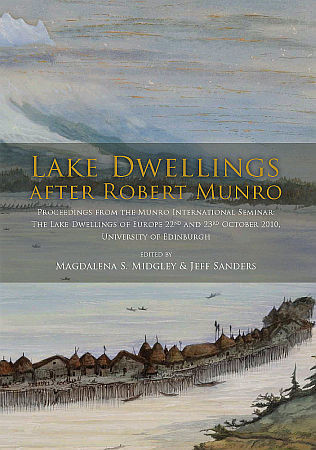
Format: Paperback
Pages: 190
ISBN: 9789088900921
Pub Date: 31 Dec 2012
Description:
Dr Robert Munro (1835-1920) was a distinguished medical practitioner who, in his later life, became a keen archaeologist. His particular interests lay in the lake-dwelling settlements of his native Scotland, known as crannogs, as well as those then being discovered across Europe. In 1885 Robert Munro undertook a review of all lacustrian research in Europe, travelling widely to study collections and visit sites.
The results of this work formed the basis for the prestigious Rhind Lectures at the Society of Antiquaries of Scotland in 1888. These were then published as The Lake-Dwellings of Europe, a landmark publication for archaeology and one that cemented Munro’s archaeological reputation.In 1910 Robert Munro offered the University of Edinburgh a financial gift with which to fund lectures in Anthropology and Prehistoric Archaeology. Over the past century this has been done through the Munro Trust. In 2010, the year of the centenary of the Munro Trust, the University of Edinburgh and the Society of Antiquaries of Scotland jointly celebrated the occasion with a gathering of Continental and British scholars. The papers presented in this publication are the results of that international seminar.This book will engage all those interested in European lake dwellings, wetland archaeology and the history of archaeology in the 19th century. The collected papers explore the historical context of Munro’s work, as well as introducing current research from across Europe. The book will appeal to both the professional and the interested amateur, of which Munro himself represented such an exciting synthesis.
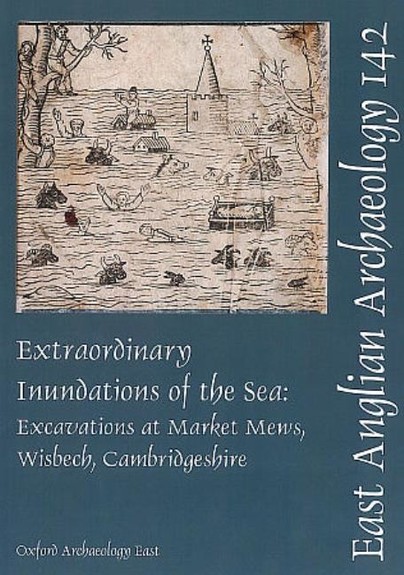
Format: Paperback
Pages: 100
ISBN: 9781907588044
Pub Date: 01 Dec 2012
Series: East Anglian Archaeology Monograph
Description:
This publication describes a relatively small excavation (by CAM ARC, now Oxford Archaeology East), whose size belies its significance. Incredibly, this is the first properly documented archaeological excavation in the core of Wisbech - an historic town long suspected to have preserved interesting medieval deposits. It fills a gaping void in previous knowledge of the character and quality of the archaeological remains in the town and represents an important first step in redressing the regional imbalance in published medieval port sequences, such as those of King's Lynn and Great Yarmouth.
The site lies within the confines of the New Market, to the north of the Norman castle. An impressive sequence of deeply stratified medieval to early post-medieval deposits was revealed, demonstrating at least thirteen building phases, the earliest of which dates to the 13th century. One structure contained evidence for in-situ metalworking during the mid 14th to mid 15th century. The buildings were each sealed by fine silts deposited during episodic flooding which can be broadly linked to documented climatic conditions of the period. Detailed recording was achieved through micromorphological analysis and the use of high resolution thin sections. While the alternate sequence of occupation and flooding found at Wisbech is broadly comparable to deposits in other regional port towns, it is almost without parallel in terms of its completeness, depth and state of preservation. A wealth of organic remains and subtle features are present, which rarely survive elsewhere in East Anglia. The discovery of this important archaeological resource highlights the requirement for consideration of its future management.

Format: Hardback
Pages: 620
ISBN: 9780904220681
Pub Date: 15 Oct 2012
Series: Oxford Archaeology Monograph
Description:
Excavations along the new road line have revealed nearly 6000 years of human activity, from a massive marker post erected by early Neolithic farmers at the head of a dry valley to a bizarre burial of several different animals dating to the sixteenth century AD. Prehistoric discoveries include two enclosures of the middle Bronze Age, both associated with some of the earliest cobbled roads in Kent, a collection of Iron Age storage pits rich in diverse deliberate offerings, and the emergence of a nucleated hamlet in the middle Iron Age. Most exciting were rich cremation burials of the late Iron Age and early Roman periods, probably successive generations of a local family, whose rise to prominence coincides with the growth of the cult centre at Springhead nearby.
The metal vessels include types new to Britain, the pottery stamps suggest the movement of continental potters to Kent, and one grave has the clearest evidence of furniture yet found from early Roman Britain. Medieval settlements of the late 11th-14th centuries mirror the renewed importance of Watling Street after the Norman conquest, and its eventual return to obscurity due to competition from the ferry from London to Gravesend.















